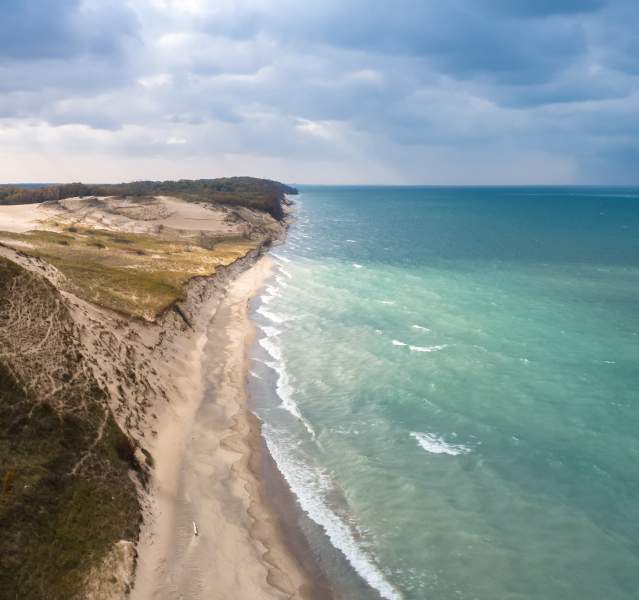My ninety-year-old neighbor used to tell me that he was going out fishing… not catching, but fishing. It’s about the experience, he’d tell me. And that is how it is with me and birding… it’s about the experience. Attempting to see some birds—sometimes being able to watch and identify them, and sometimes not. It’s not always easy, especially when the birds are small! So, when I am feeling like having some birding success, I often set my sights on the larger birds.
Should you visit Kankakee Sands in February, there is a very good chance that you may get to see one of our larger prairie birds—the rough-legged hawk (Buteo lagopus). With a wingspan of fifty-three inches, there is a good chance you’ll notice it when it is soaring overhead!
But how will you know that the bird perched on the fenceposts around the bison pasture, or hunting from a small oak tree growing in the prairie, or soaring overheard, is indeed a rough-legged hawk?
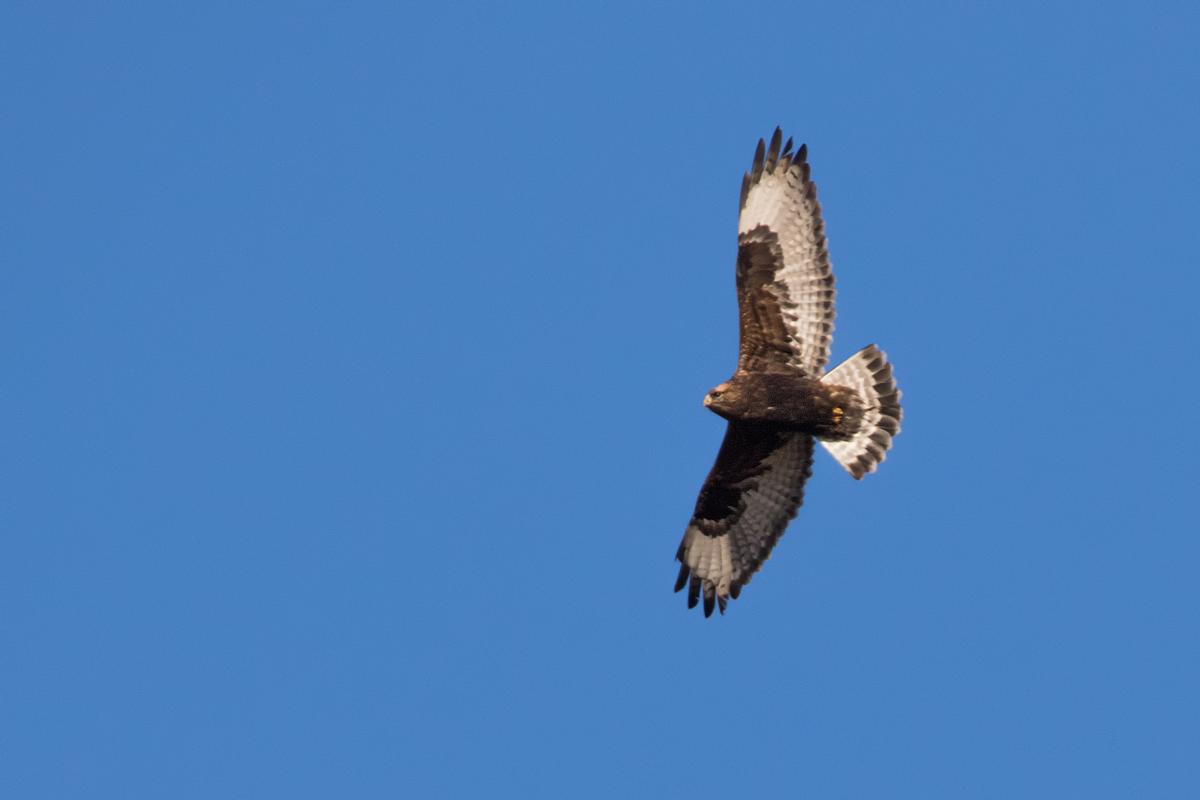
That is where the bird-watching part comes in. Taking note of identification markings and bird behavior can help you to decide just which bird it is that you are looking at. For example, when a rough-legged hawk is in flight, you will be able to see that its long wings do not taper to a point, as a falcon’s wings do. Instead, their wings are broad and wide at the tip. Notice the tail for another clue—the tail of a rough-legged will be broad and fan-shaped.
The rough-legged hawk was named for the feathers on its legs, which give the legs a rough look. Most birds do not have feathers on their legs. Think about those long-legged flamingos, majestic bald eagles, and even the tiny chickadees—all with smooth, featherless legs.
If the bird is perched, are you seeing a small beak and feathered legs? If soaring, does it hold its long broad wings mostly horizontal in a light upward v-shape (known as a dihedral)? Watch for the flapping of the wings: is it shallow and smooth, lazing and loping? Is the bird solitary and hunting alone? Does the bird stop in mid-flight to hover, flapping its wings rapidly to stay in one place and then diving down to pounce feet first upon its prey? More clues that you’re witnessing a rough-legged hawk.
Rough-legged hawks can be confused with the other large bird of prey that spend winters at Kankakee Sands, so focus your attention on the tail. Like the rough-legged hawk, the red-tailed hawk also has a broad fan-shaped tail, but its tail will also have red feathers, most easily seen when in flight, which rough-leggeds don’t have. Northern harriers will have a white rump band at the base of their long, narrow tail.
The call of the rough-legged hawk won’t offer much help when it comes to identification, unfortunately. Though its two-second, cat-like meow call is very unique, it is rarely heard. Like most hawks, rough-legged hawks seldom vocalize outside of breeding and nesting season. The exceptions are the hungry young nestlings and juveniles who call loudly and often to their parents for more and more food. The squeaky birds get the voles!
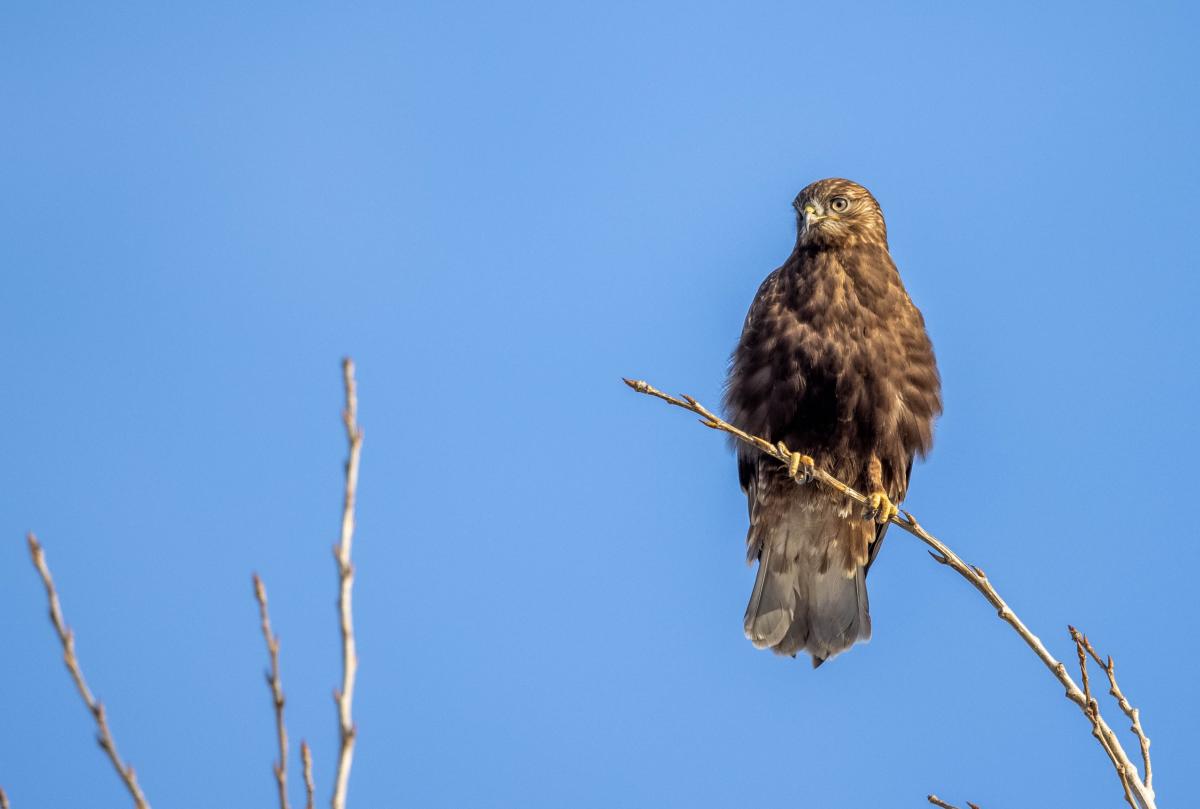
Sometimes bird behaviors, like those listed above, can be much better clues to the identity of a bird than the actual feather markings and coloration. This is especially true for birds like the rough-legged hawk, which exhibit polymorphism, in which different birds of the same species exhibit variations in their feathers or plumage. In the case of the rough-legged hawk, there is a light form (or morph) and a dark morph. If a rough-legged hawk is patterned in the light morph form, it will be mottled brown all over, have a pale brown head, dark belly patch, and the undersides of the wings will be white with small dark spots at the bend or elbow of the wing. In the dark morph form, the rough-legged hawk will be covered from head to toe, in dark brown feathers, the only exception being a band of white feathers along the outer edge of the underside of the wings and tail. At Kankakee Sands, we typically see the light morph form, but the dark morph form also is present, so stay sharp!
Rough-legged hawks spend summer months in the Arctic tundra of Alaska and Canada, where they nest on cliff edges, raise their young and feed on voles, lemmings, ground squirrels, hares, and small birds. They winter all across southern Canada and the northern US in open areas such as prairies, marshes, fields, bogs, and dunes, looking for mice, voles, and shrews.
Kankakee Sands is open for birding any time of the year, and thanks to the 8,000 acres of planted prairie and wetland acres here, there are almost always birds to be seen! In the winter, it’s highly likely that you’ll see rough-legged hawks, red-tailed hawks, and northern harriers during the day, and short-eared owls at dawn and dusk. In the spring, you can delight in many migrating birds in bright breeding plumage singing for a mate. Summer is the time for nesting and feeding, and then in fall, the birds again migrate.
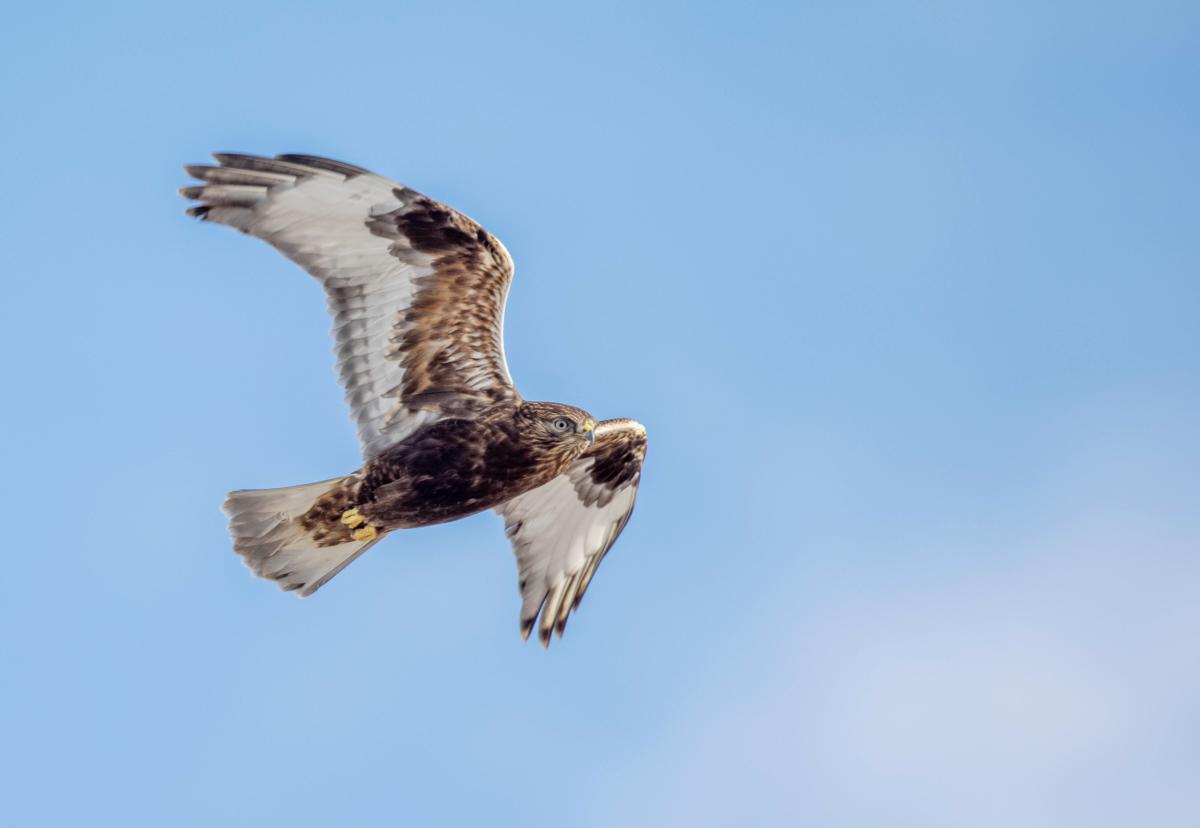
You can bird from your car, from a parking area, or from one of the trails we have at Kankakee Sands. If you are new to birding and would feel more at ease with a birding buddy, reach out! We have staff and volunteers who are able to take small groups of visitors birding. At our Kankakee Sands office, we have bird identification books and binoculars that can be borrowed, too.
There are so many other natural spaces and places to bird in Indiana, and all around the world! Birdability is a fantastic resource for those wanting to do more birding. Birdability’s tagline is “because birding is for everybody!”, and it’s true! Their vision is that birding is “for everybody and every body, regardless of disability or other health concerns.” The Birdability website has crowdsourced maps for birding locations all across the globe that describe in detail the accessibility of each location so that a person knows what to expect when arriving and will hopefully feel more comfortable and prepared to get out there and get birding!
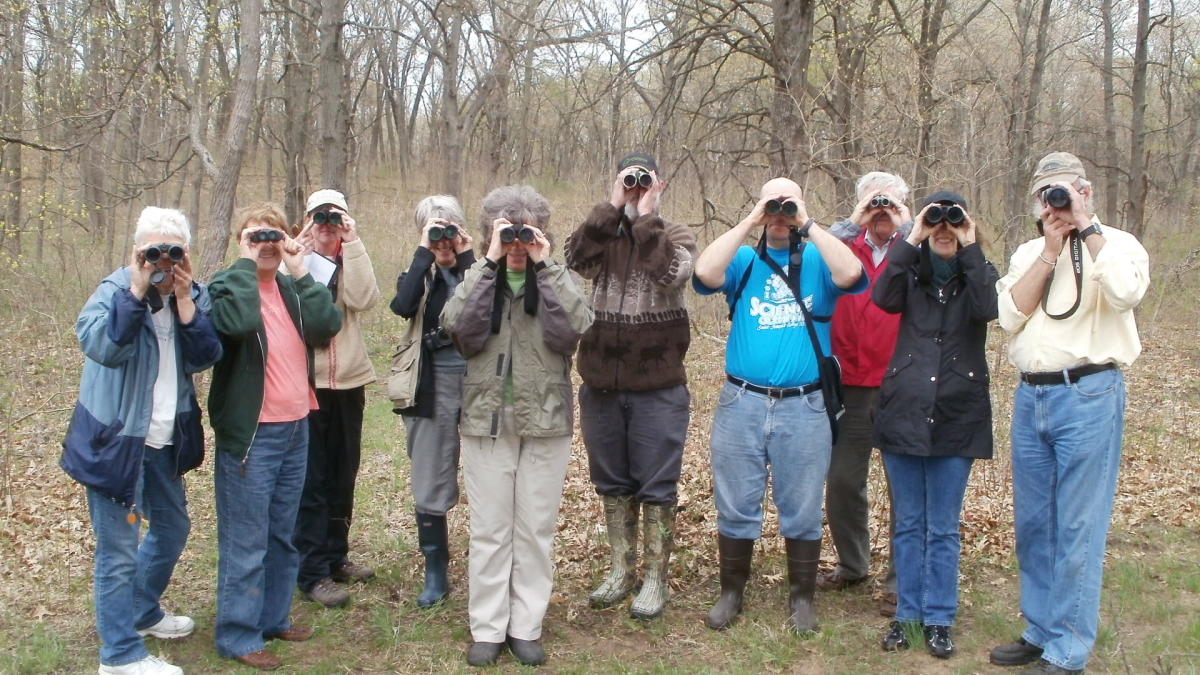
Indiana Audubon reports that 413 species of birds have been documented in Indiana, and of those, 247 species have been documented at Kankakee Sands. With all those bird species utilizing the planted prairies and wetlands here, a birding adventure surely awaits you! Come on out to Kankakee Sands this February and get your birding skills warmed up with the rough-legged hawk. It’s going to be a great year for you and birding, I just know it!
Photos by Shari McCollough, Jeff Timmons. and Alyssa Nyberg/TNC
